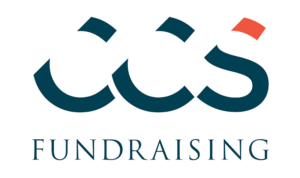An institution’s mission cannot be fulfilled if its governance and financial health are not aligned. Money cannot be raised if the people in charge have been placed in a position to fail from the beginning. The stakes of having the right people at the top are high in all nonprofit sectors, and as organizational leaders, it’s important that we help them succeed.
Revenue for nonprofits is primarily steered by financial gifts that come from the board. When you factor in board members who make introductions and help request gifts, the board’s total fundraising impact is even greater. Regardless of what your mission is, or how many board members you have, there are three actionable practices to use right away that will ensure that your board will be successful in raising funds.
1. Identify and Recruit Strong Fundraising Board Members
The strongest boards include people with a variety of backgrounds and skill sets. Requesting gifts might not be for everyone, but just as the inclination to give is a common requirement for board service, the inclination to ask is also important. Organizations of all sizes should look for potential board members who are willing to help with fundraising, along with donor stewardship and cultivation.
How do you know who will be willing to ask? Develop opportunities to “test” potential board members. Advisory boards, alumni organizations, campaign committees, or smaller task forces focused on a specific issue are excellent ways to get to know volunteers and see them in action. Like a job interview, this kind of role also gives the volunteer the opportunity to see if a higher-level leadership role is right for them. Both the organization and the volunteers should know what they’re getting into before the official board service begins.
Look for volunteers who, first and foremost, are committed to your institution and your mission. Beyond this, identify potential board members who are comfortable with the idea of fundraising. Those who give to your organization regularly, attend events, and are generally comfortable in conversations about their own support are most likely to be willing to visit with others. Some volunteers bring other talents to your board and may not be familiar with fundraising but are willing to learn. Include some fundraising education and orientation in all volunteer opportunities to test the waters with your volunteers and see who might be willing to become more involved from a fundraising standpoint.
2. Set Expectations
Your board members have many responsibilities and fundraising is a priority. It is important to set expectations from the outset and reinforce those expectations throughout the year. Clearly communicate that a critical ingredient for powerful impact is funding brought in from the board, either through their individual gifts or through securing funds from others. Sometimes, we are inclined to apologize for fundraising, but it’s important not to present fundraising in a negative light or downplay its importance compared to other roles on the board.
Fundraising is an “inside/outside” function. The campaign experiences of successful organizations reinforce this idea. People closest to the organization need to lead the way in financial support so it builds momentum and confidence when you begin to reach out to the broader community. No one is closer to your organization than the group charged with its governance. There are many ways to engage your board members in securing their gifts, including through annual giving, or event sponsorship. You can also implement a strategy where every board member commits to targeting a multi-year leadership gift.
For any strategy, it is paramount to outline your fundraising expectations in the beginning. Incorporate fundraising into the formal board roles and responsibilities, and review this in your new board member orientation each year. Remember that the board chair needs to lead by example—he or she sets the expectation that fundraising is an essential component of the board role at your institution.
3. Onboard Them Properly
Orienting and training board members to engage in fundraising is essential, not only to build their confidence, but also to ensure that the right messages are being shared.
Asking for gifts can be daunting. You need to educate board members about the process and train them in best practices. One or two (or more) dedicated orientation sessions will give you the opportunity to share the language board members should use to be successful and help them understand how to handle the questions or objections they are likely to encounter. Use these training sessions as opportunities to share the most important message points of your institution or campaign, to ensure that all volunteers are on the same page. Don’t be afraid to use games and role play— acting out different gift request scenarios will help your board members prepare for all types of conversations.
Following these orientation sessions, make sure your board members are equipped with the tools they need for success. A suite of training materials might include a volunteer handbook, contact sheet, overview of best practices, and frequently asked questions.
Most importantly, remind board members that you are here for them. Feeling supported by the institution and professional staff will convince volunteers that their time is well-managed and they are not in this alone. Give them the confidence to be successful, and celebrate their successes—large and small—with them.
The Signs of a Successful Board Plan
- You’ve identified, engaged, and recruited the best board prospects
- You’ve set realistic expectations
- You have their commitment, and you have helped them understand the successes and challenges of your organization
- Your board has a solid foundation, and your organization will be able to implement a fundraising plan that will be a driving force toward a positive and powerful impact for good!
